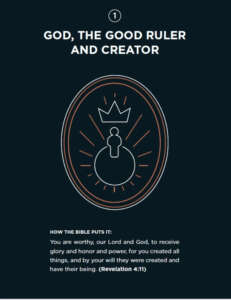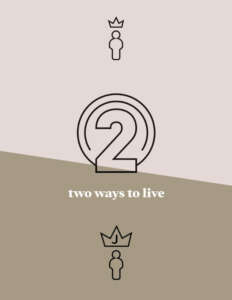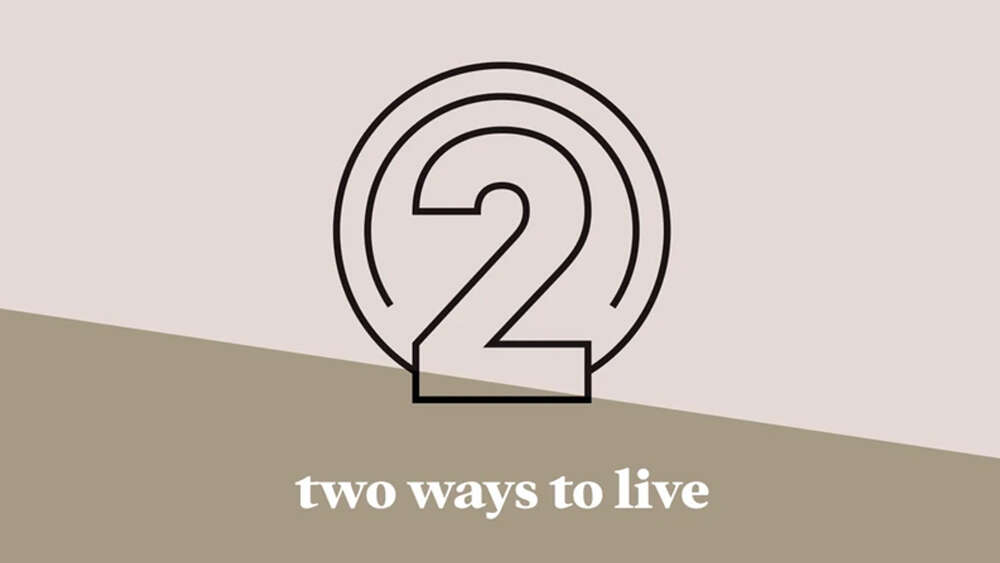It started as a small experiment in writing a simple outline of the good news about Jesus Christ. It spread across Australia, especially on university campuses – and has sold in the millions.
It’s Two Ways to Live, now given a new format – and its creators have even changed two of the Bible verses thousands have memorised to tell the gospel story!
“It started really way back in the late ’70s and ’80s with an attempt to say, how can we communicate given that the gospel doesn’t change, but the language of forms and various things do change?” Tony Payne, who went on to found the hugely successful Matthias Media company, tells Eternity.
Phillip Jensen, who became Dean (minister) of Sydney’s St Andrews Cathedral, came up with the outline – written to communicate the gospel simply and clearly to those he and Payne saw as an increasingly secular biblically illiterate society. They got the “increasingly” part right. That biblically illiterate Australia needed something that focused on the core of the gospel – the death and resurrection of Jesus – in simple language.
“What hadn’t been done is to capture the logic and clarity of the gospel in a simple way that you could not only learn but could also pass on.” – Tony Payne
It worked. “Far more wide-ranging and powerful than I think any of us thought at the time,” says Payne.
“At the time, it was devised for two real purposes – to give Christians a catechism-like outline to learn and grasp themselves and be an opportunity to be able to share that with others in their own way.
“It spread, not only around Australia but to the US and the UK and South Africa and all around the world, because it managed to do something that just wasn’t being done. What hadn’t been done is to capture the logic and clarity of the gospel in a simple way that you could not only learn but could also pass on.”
As it turned from a two-colour pamphlet published by Anglican Media into a professional booklet by Matthias Media – the publishing company founded around Payne, Phillip Jensen, and St Matthias church in Eastern Sydney – it went on to sell more than four-and-a-half million copies.
“It’s just hard to imagine how many people have heard the gospel through this framework, and by God’s grace have been saved by it. It’s humbling and amazing.” – Tony Payne
Payne is someone you can embarrass by asking, “I think I can take it that you fully expect to meet many people in heaven who found Jesus through your ministry?”
There’s a pause, of course. “Well, I’ve met many of them already. And so I’m hoping they’ll be with me in heaven, plus all the others who I haven’t met.
“It’s a very bold way of putting it, but you can’t put numbers on people who’ve come to know Christ because a Christian shared the gospel with them using that framework as their guide, or a minister preached a sermon or a youth group leader gave a talk in which, really, he was explaining Two Ways To Live.
“It’s just hard to imagine how many people have heard the gospel through this framework, and by God’s grace, have been saved by it. It’s humbling and amazing.”
It was a bit of an unfair question because he would be worried that he came across as boastful. But actually, I forced it out of him.
 You can blame Billy Graham a little for Two Ways To Live. It was devised for the 1979 meetings Graham held in Australia – but its early main context was the student movement.
You can blame Billy Graham a little for Two Ways To Live. It was devised for the 1979 meetings Graham held in Australia – but its early main context was the student movement.
It spread, Payne thinks, because it was simple and tried really hard not to use jargon language.
“So it famously talked about rebellion against God, instead of sin to communicate the idea without using the word that most people wouldn’t understand.”
It talked about God as a “ruler” rather than a “king” or “sovereign”.
Two Ways to Live’s gospel outline goes straight to a central issue: why did Jesus die? Payne explains it: “Why are we under God’s judgment – because of our rebellion against him; why we rebelled against him was because he’s our creator who we should have been serving and loving and honouring. It was the logic that starts with creation and works its way towards the cross that was innovative and powerful in making sure people understood what it meant for Jesus to die for sins.”
Another distinctive feature Payne points out is the emphasis on Jesus’ resurrection. “Many Christians gospels kind of stop at the cross and then maybe check on the resurrection as almost like an afterthought. Whereas Two Ways To Live managed to capture that New Testament emphasis on the resurrection as the culmination of the gospel, where Jesus rises as the crucified one, to be the ruler of all and to offer forgiveness and new life for all.”
So what’s been changed? A note of thankfulness to our creator in the first “box” of six in this gospel outline.
And interestingly, another note of thankfulness – for freedom from sin/rebellion has been moved into the “fifth box” about the resurrection. It’s part of the hope of new life.
“Just as you wouldn’t chat to someone in bullet points, you chat to them in your own words and you flesh things out and you give it your own twist.” – Tony Payne
When I first heard about Two ways to Live, I was worried that it was too mechanical, too much like rote learning, Until someone told me that each time Phillip Jensen – who wrote the first version – never could make it sound the same way twice. That’s a feature, not a bug.
“I hope that every time anyone uses Two Ways to Live, it comes out slightly differently. Because it’s a skeleton and a bullet-point outline; it’s not a presentation that you reproduce by rote and just kind of dump on people,” says Payne.
“This is a great misconception, and maybe this is our fault for not communicating that as clearly as we could have. We tried. We’ve said this many, many times – it’s a skeleton. It’s not the full thing. It’s the bullet points. And just as you wouldn’t chat to someone in bullet points, you chat to them in your own words, you flesh things out, and you give it your own twist. So anytime you share Two Ways To Live with someone, it’ll come out differently because of who you are and your particular way of speaking and how you would flesh it out.”
And another change – sheep have arrived. Or at least Isaiah 53:6 “We all, like sheep, have gone astray, each of us has turned to our own way” – to point out that we are all rebels, and the back half of the verse in Box four which talks about Jesus dying for us: “and the Lord has laid on him the iniquity of us all.”
The Matthias Media team have been working on the “new” Two Ways To Live for about 18 months. “I guess we became convinced that there’s still nothing else like Two Ways To Live, says Payne. “It still performs a precious function. And so really it deserved some investment and a new and more effective form and format. And so we’re really delighted that, under God, that seems to have come about and that hopefully a whole new generation can appreciate it and learn from it and use it to share the great gospel of Jesus.”
 Two Ways To live is available at Koorong.
Two Ways To live is available at Koorong.
Pray
Some prayer points to help
Pray that the “new” two Ways TO lIve will be even more effective than the original!



